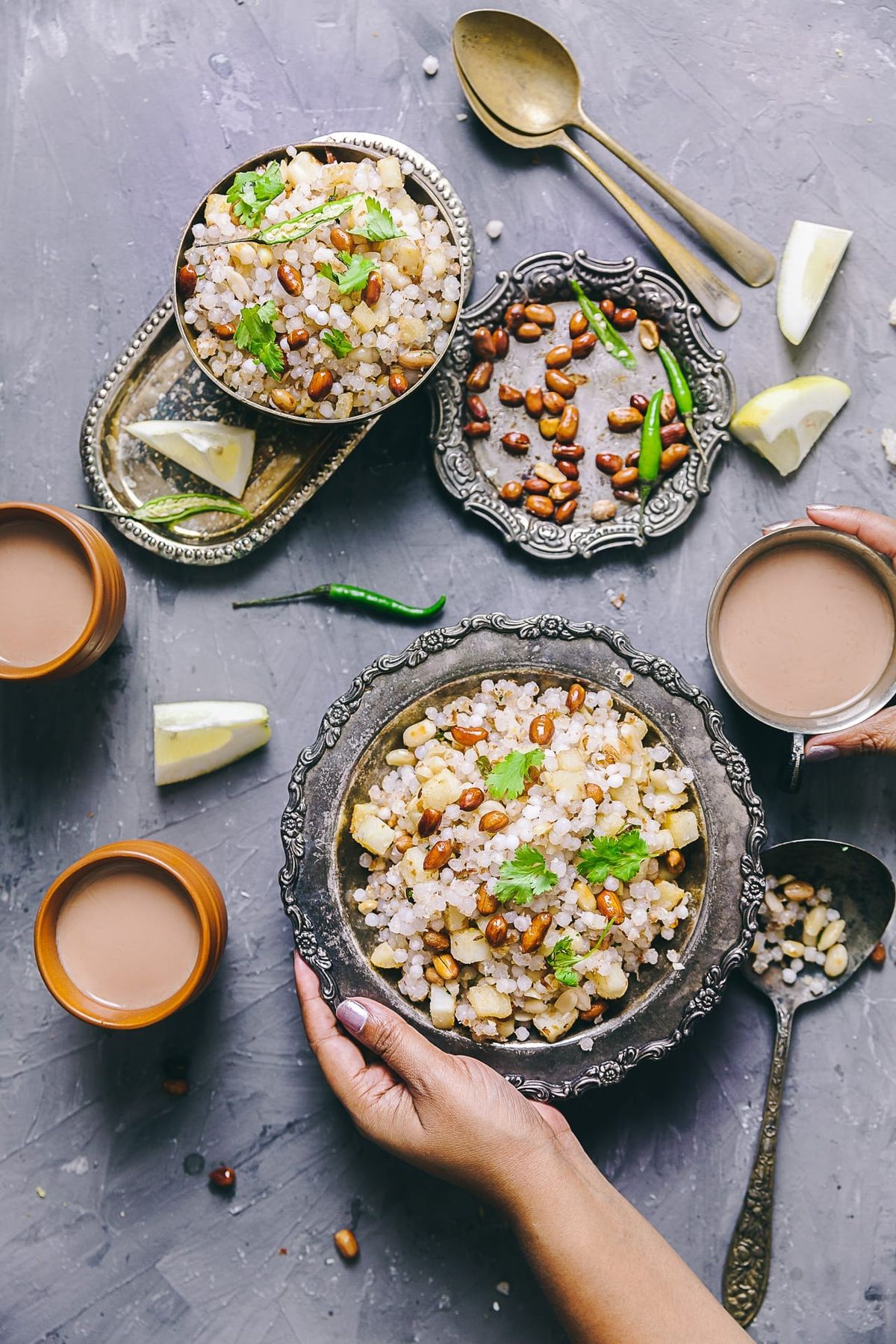Hook: When the world asks you to pause and purify, Sabudana Khichdi arrives like comfort in a bowl — soft, warm, and familiar.
In Maharashtra, when someone says “आज उपवास आहे,” it rarely carries heaviness. Instead, it comes with a kind of grace. A rhythm shift. Fasting here doesn’t mean deprivation — it means devotion, reflection, and eating light, pure, nurturing food.
And in the middle of this gentle ritual stands Sabudana Khichdi — humble tapioca pearls cooked with ghee, peanuts, potatoes, and cumin — but more than that, it’s a warm memory served fresh, a dish that tastes like home when words fall short.
It’s the kind of food a mother makes quietly before sunrise, with sleepy hands and a full heart. It’s soft enough for a child, simple enough for an elder, and sacred enough for a fast.
INGREDIENTS (Serves 2)
| Ingredient | Quantity |
|---|---|
| Sabudana (sago/tapioca pearls) | 1 cup |
| Boiled potato | 1 medium, diced |
| Roasted peanuts (coarsely crushed) | ½ cup |
| Green chilies | 1–2, finely chopped |
| Ghee | 1.5 to 2 tbsp |
| Cumin seeds (jeera) | 1 tsp |
| Rock salt (sendha namak) | To taste |
| Sugar (optional) | ½ tsp |
| Lemon juice | 1 tsp or to taste |
| Fresh coriander | A handful, chopped |
| Grated coconut (optional) | 1 tbsp (for garnish) |
STEP-BY-STEP WITH AROMA, FEELINGS & HUMILITY
Step 1: The Gentle Beginning – Soaking the Sabudana
- Rinse sabudana gently 2–3 times till the water runs clear.
- Soak with just enough water to cover it — about ¾ inch above the pearls.
- Let it sit covered for 4–6 hours or overnight.
- After soaking, check — the sabudana should be soft, pearl-like, and non-sticky when pressed.

🕯️ This is the quietest part — like a pre-dawn puja. The sabudana swells silently, becoming soft and yielding. A reminder that growth, too, needs stillness.
Step 2: Tempering the Soul
- Heat ghee in a thick-bottomed kadhai or pan.
- Add jeera (cumin seeds) — let them sizzle and release their nutty aroma.
- Toss in the chopped green chilies — they crackle, releasing warmth into the air.
- Add boiled, diced potatoes. Sauté till they turn golden at the edges.
At this point, the kitchen smells of ghee, earth, and spice — soft, familiar, like your favorite wool blanket on a cold morning.

Step 3: The Heart of It – Mixing In
- Add the soaked sabudana and coarsely ground roasted peanuts.
- Stir gently. Do not press or overcook — treat the sabudana like you would a child’s first drawing.
- Add rock salt, and sugar (just a pinch — it balances the flavors).
- Cook on medium-low flame, stirring occasionally for 5–7 minutes.
- When the sabudana turns translucent and fluffy, it’s ready.
💭 It glistens like pearls in sunshine. A dish made with care, not chaos. Each grain saying, “I’m here, I’ve softened, I’m enough.”
Step 4: Finish with Feeling
- Switch off the flame. Squeeze in lemon juice, sprinkle fresh coriander, and grated coconut if using.
- Serve warm — not piping hot, just enough to soothe.
The final aroma is like the breeze after a summer rain — earthy, sweet, and bright. It doesn’t shout; it gently calls you to sit, breathe, and be.

WHY THIS DISH IS LOVE
- Gluten-free, light, and sattvic — ideal for fasting, or days when your spirit needs softness.
- It’s quiet food — made without excess, without noise.
- Filled with textures — soft sabudana, crunchy peanuts, creamy potatoes.
- It’s not just a dish — it’s a gesture. Often made for someone, not for oneself.

FINAL SERVING THOUGHT
Sabudana Khichdi isn’t made for a feast. It’s made for the in-between days — when you’re not celebrating loudly, but living softly.
It reminds us:
Not all nourishment comes with spice.
Sometimes, it comes with stillness, light, and a spoonful of ghee.




No responses yet